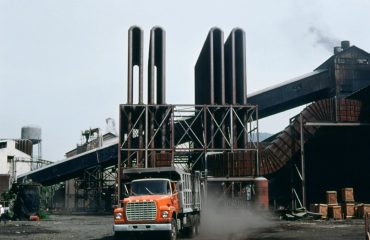Superalloy steels represent the pinnacle of metallurgical engineering, boasting exceptional strength, high-temperature resistance, and corrosion resistance. These remarkable materials are not just “stronger steel”; they are engineered alloys designed to withstand extreme conditions, making them indispensable in a wide range of high-performance applications. This post delves into the fascinating world of superalloy steels, exploring their unique properties and diverse applications across various industries.
1. Aerospace: Reaching for the Stars with Superalloys
The aerospace industry is perhaps the most demanding user of superalloys. The extreme temperatures generated during flight, coupled with the need for lightweight yet incredibly strong materials, make superalloys the ideal choice for critical components. Nickel-based superalloys, in particular, are extensively used in gas turbine engines, forming the blades, vanes, and combustor components. These components experience temperatures exceeding 1000°C (1832°F), and the superalloys’ ability to retain strength and resist creep (deformation under sustained stress) at these temperatures is paramount for engine performance and safety. Beyond gas turbines, superalloys also find applications in aircraft structures, particularly in high-stress areas where fatigue resistance is crucial. The development of even more advanced superalloys is constantly pushing the boundaries of aerospace engineering, enabling the creation of faster, more efficient, and safer aircraft.
2. Energy Sector: Powering a Sustainable Future
The energy sector is another major consumer of superalloy steels. In power generation, these alloys are vital for components within gas turbines and power plants. The high-temperature and corrosive environments within these systems demand materials with exceptional durability, and superalloys deliver. Specifically, they are used in the construction of boiler tubes, superheater tubes, and other components exposed to high pressures and temperatures. Furthermore, superalloys are crucial in advanced nuclear power applications, where resistance to radiation damage and high temperatures is critical for reactor safety and efficiency. As the world transitions towards cleaner energy sources, the demand for high-performance materials like superalloys is only expected to increase, particularly in applications involving geothermal energy and concentrated solar power.
3. Chemical Processing: Withstanding Harsh Environments
The chemical processing industry operates in some of the most aggressive environments imaginable, dealing with corrosive chemicals and high temperatures. Superalloy steels, particularly those with enhanced corrosion resistance, are essential for processing equipment that must withstand these harsh conditions. They are used in the construction of reactors, pumps, valves, and other components that are exposed to acids, alkalis, and other corrosive substances. The ability of superalloys to maintain their integrity in these demanding environments ensures operational efficiency and prevents costly downtime due to equipment failure. The selection of a specific superalloy often depends on the specific chemical being processed, requiring careful consideration of factors such as corrosion resistance to specific chemicals and the operating temperature.
4. Medical Implants: A Vital Role in Healthcare
The biocompatibility and strength of certain superalloys have led to their increasing use in medical implants. While not as common as titanium alloys, some superalloys are proving valuable in applications where high strength and fatigue resistance are crucial. For example, they are being explored for use in orthopedic implants, such as hip and knee replacements, where the ability to withstand the stresses of daily life is essential. Research is ongoing to further improve the biocompatibility of superalloys and expand their applications in the medical field. The long-term durability and performance of these alloys are critical for the success and longevity of these vital implants.
5. Automotive and Industrial Applications: Expanding Horizons
Beyond the high-profile applications discussed above, superalloy steels are finding increasing use in various industrial and automotive applications. In the automotive industry, they are being explored for use in high-performance engine components, where their high-temperature strength and durability can improve engine efficiency and performance. In other industrial settings, they find applications in high-temperature furnaces, heat exchangers, and other equipment where resistance to oxidation and corrosion is critical. The versatility of superalloy steels allows them to be adapted to a wide range of applications, continuously expanding their importance in diverse industrial sectors.
In conclusion, superalloy steels are remarkable materials that play a crucial role in many high-performance industries. Their exceptional properties—strength, high-temperature resistance, corrosion resistance, and fatigue resistance—make them indispensable in demanding applications, from aerospace propulsion to medical implants. As technology continues to advance, the development and application of superalloys will undoubtedly continue to shape innovation across a wide range of sectors.
Tags: superalloy steel, superalloy applications, aerospace materials, high-temperature alloys, corrosion resistant alloys




